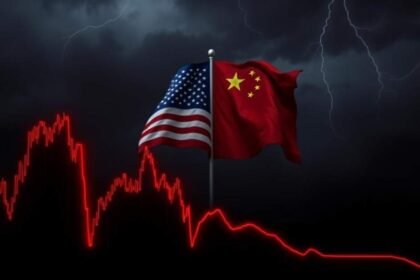I just want to pick up on the US indicators that you say could be headed for a deeper correction. In that sense, do you think that in the interim, India is decoupled right now or if they fall, will we fall too?
Sandeep Tandon: A few months back also, we talked about the decoupling process beginning. In fact, in March we wrote about India decoupling. I will not say up to a large extent, but up to a small extent, the decoupling process has begun. If anything starts, it is a few years and a few quarters’ process, and not going to happen overnight. So, purely on our macro understanding and our behaviour thesis, what we have built in last many years, we are confident that India decoupling process has already begun and not only India, also the emerging market, particularly Asia-centric emerging market is in a far better situation than the developed economies or the developed market and that trend is quite visible in the currency movement also.
The whole world in January had written off emerging markets and talked about how the US will go and exactly the reverse happened. I am not saying you should take a contrarian call, but that was the thought process. People thought that Asian market currencies or the emerging market currencies would collapse significantly. Yes, they corrected and if you really ask me, either we have already seen the worst of rupee or we might be seeing very soon, but we are in the fag end of that also.
In fact, from a longer-term perspective, the probability that 2025 will be remembered as a long-term top for the USD-INR and the Indian rupee should appreciate over the next five to six years and that is the clear message. If I have to do a reverse calculation and try to interpret it, if the rupee is going to get stronger over a period of five-six years, then obviously it is a clear indication the Indian market also should be doing very well.
I want to address some sectors as well. You have a great understanding about the pharma sector. For now, they are exempt from tariffs. But there is all that noise that eventually it is going to be 250% tariffs. What is the practicality of it and for Indian investors, do you now make that disconnect and look at India-focused pharma companies as opposed to the ones which manufacture for the US?
Sandeep Tandon: Let us sit down and analyse it all rationally and I am always surprised to see even the best of the analysts get carried away in this narrative getting built about that 250%. Let us understand the US compression. If you recollect, Trump has been threatening for a while, but if you really sit down and analyse, he has been targeting innovators, not generics. The point which he is trying to make is a lot of companies, which are US-centric but manufacture their product in Europe and have huge 50% to 80% or 90% margin when selling in the US. They understand there is a very large margin they are making and that is something they are talking about. A lot of people read it as, at least from the R&D perspective, the budget will go down. So, that is a secondary impact or tertiary impact that can happen. But their focus is on innovators and this time also, he was not able to do anything.
Despite making noise, ultimately he has a written letter to bring down the prices. Now, let us understand the larger this is. Does the US have any other source of buying generics or pharmaceuticals? India is the biggest supplier of generics and if innovators are penalised for whatever reason, money or people will shift towards generics and Indian generics are 70% to 90% cheaper as compared to comparative formulation in the US itself.
So, the US or Mr Trump does not have too many options. See, you can defer buying a car for two years. You can defer buying garments or clothes for, let us say for six months or eight months, but you cannot defer buying medicine even for next two hours. That is the compulsion he has. So, we have to understand what is the objective? Yes, he is making noise. But he does not have a choice.
If you want to source somewhere and set up manufacturing in the US, it takes three to five years to build a capacity and even then the US FD approval nowadays takes around 12 to 15 months, even 18 months. A lot of plants are still waiting for US approval. Within the US they are not able to devote time, their bandwidth is also limited. So, I do not think anything would happen in the pharma space in a hurry and Indian generics are in a very comfortable position and some of the companies like Lupin have manufacturing facilities in the US. Aurobindo is one of the large players and has two manufacturing facilities. They have recently acquired a third one. So, we have to identify all the generic companies, all the pharma companies that have bases in the US or other countries.
If they are based in the US, that will give them comfort psychologically if something can drastically change and they can easily export or manufacture there. If you ask me, one single thesis in the current context is the beneficiary in absolute terms and relative terms is pharma. If you ask me where I should put my money if I have to deploy today, then I say put money in pharma funds. This is absolutely no-brainer trade.







